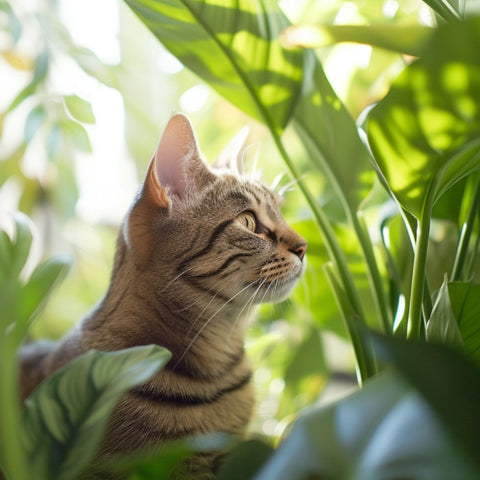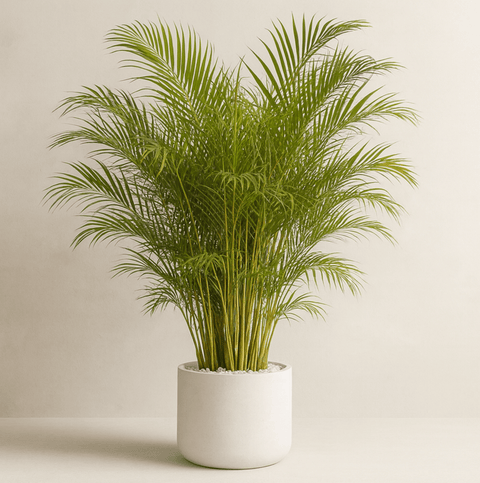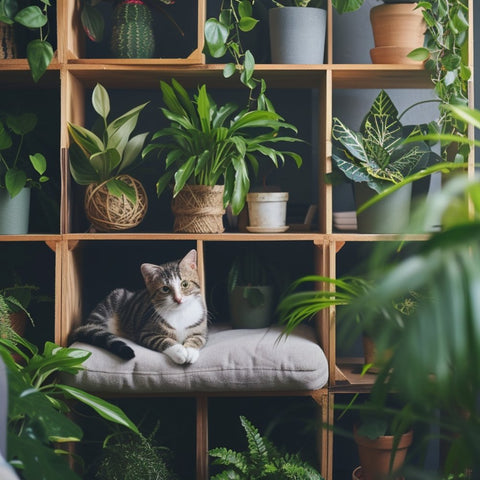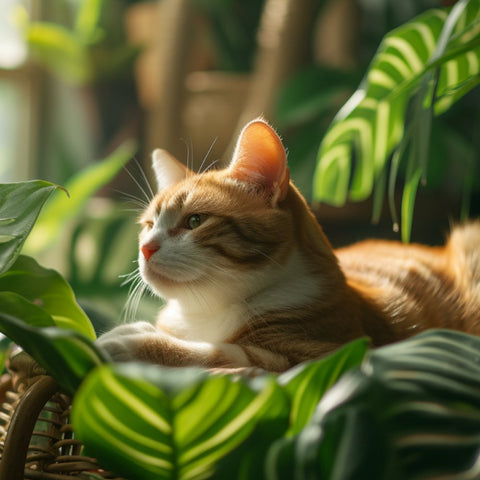Introduction

Jade plants, peace lilies, and spider plants are just a few examples of common houseplants that add beauty and vibrancy to our homes. However, did you know that some of these beloved plants can be toxic to our feline friends? As cat owners, it's crucial to create a cat-friendly environment that ensures the safety and well-being of our furry companions.
In this article, we will explore the importance of having non-toxic plants in a cat-friendly environment and highlight the benefits they can bring to both cats and their owners. We will also address common concerns and misconceptions about plant toxicity and provide a comprehensive list of non-toxic plants that are safe to have around cats.
Understanding Toxicity in Plants
Before we delve into the world of non-toxic plants, let's first understand the harmful substances commonly found in plants that can be toxic to cats. Many plants contain chemical compounds such as alkaloids, glycosides, and essential oils, which can cause various symptoms of toxicity if ingested by cats.
Some common symptoms of plant toxicity in cats include gastrointestinal upset, drooling, vomiting, diarrhea, tremors, and even organ failure in severe cases. It is essential to be aware of these symptoms and seek veterinary assistance if you suspect your cat has ingested a toxic plant.
Popular Non-Toxic Plants for Cats

Now that we understand the dangers of toxic plants, let's explore the world of non-toxic plants that can be safely enjoyed by cats. There are numerous options available for indoor and outdoor gardening that are visually appealing, easy to care for, and most importantly, non-toxic to our feline friends.
When it comes to indoor plants, some safe options include the spider plant (Chlorophytum comosum), Boston fern (Nephrolepis exaltata), and the money tree (Pachira aquatica). These plants not only add a touch of green to your home but also contribute to healthy air quality.
For those looking to incorporate herbs into their indoor garden, catnip (Nepeta cataria), catmint (Nepeta mussinii), and cat thyme (Teucrium marum) are great choices. These herbs not only provide sensory stimulation for your cat but also offer various health benefits, such as improved digestion and stress relief.
If you have outdoor space available, consider planting non-toxic plants such as marigolds (Tagetes spp.), pansies (Viola spp.), and sunflowers (Helianthus spp.). These colorful additions to your garden or balcony will not only brighten up the space but also provide safe outdoor exploration for your cat.
Benefits of Non-Toxic Plants for Cats

In addition to ensuring the safety of our feline friends, incorporating non-toxic plants into their environment can bring a multitude of benefits. Let's explore some of these advantages:
-
Promoting a cat's mental and physical well-being: Non-toxic plants provide cats with the opportunity to engage their senses, offering stimulation and mental enrichment. From the texture of the leaves to the gentle rustling sound, plants can keep cats entertained and mentally sharp.
-
Creating a calming and stimulating environment: The presence of plants has been shown to have a calming effect on cats, reducing stress and anxiety. Having non-toxic plants around can create a soothing and comforting atmosphere for your furry friend.
-
Natural air purifiers with added benefits for cats: Many non-toxic plants have air-purifying properties, removing toxins and pollutants from the air. Improved air quality can have a positive impact on the overall health and well-being of both cats and their owners.
Tips for Incorporating Non-Toxic Plants in a Cat-Friendly Home

While non-toxic plants are safe for cats, it's important to take precautions to ensure their well-being. Here are some tips for integrating non-toxic plants into a cat-friendly home:
-
Ensure plants are securely placed to prevent accidental ingestion: Cats are naturally curious and may attempt to nibble on plants. It's important to keep plants out of reach or use hanging baskets to prevent access. Additionally, consider using cat-friendly deterrent sprays to discourage plant nibbling behavior.
-
Use cat-friendly barriers or deterrents to protect plants: Placing physical barriers, such as mesh or decorative fencing, around plants can prevent cats from coming into contact with them. Additionally, there are pet-safe deterrent sprays available on the market that can help discourage cats from going near plants.
-
Regularly monitor and observe cat interactions with plants: Keep an eye on your cat's behavior around plants and watch for any signs of curiosity or nibbling. Be proactive in redirecting their attention and providing alternative toys or activities to keep them engaged.
Common Questions and Concerns About Non-Toxic Plants for Cats
As cat owners, it's natural to have concerns and questions about introducing non-toxic plants into our homes. Let's address some common misconceptions and concerns:
-
Common misconceptions and myths about plant toxicity: There are several misconceptions surrounding plant toxicity in cats, such as assuming all plants are harmful. It's important to differentiate between toxic and non-toxic plants, allowing cats to safely coexist with greenery in their environment.
-
Addressing concerns about plant care and maintenance around cats: Some cat owners worry about the potential mess or damage that cats may cause to plants. Proper plant care, including regular watering and pruning, can help prevent plant damage while still allowing cats to enjoy their surroundings.
-
Suggested resources for further research and guidance: For those seeking more information or guidance on non-toxic plants, there are several reputable resources available, including books, online articles, and veterinarian advice. Consulting with a veterinarian can provide personalized recommendations based on your cat's specific needs and behaviors.
Conclusion
Creating a cat-friendly environment is essential for the well-being and safety of our feline friends. By incorporating non-toxic plants into our homes and outdoor spaces, we can provide cats with a visually appealing, stimulating, and safe environment.
Remember to prioritize the health and happiness of your cat by choosing non-toxic plants and taking necessary precautions to prevent accidental ingestion. With a little planning and research, you can create a space that benefits both you and your furry companion.






























Comments (0)
There are no comments for this article. Be the first one to leave a message!